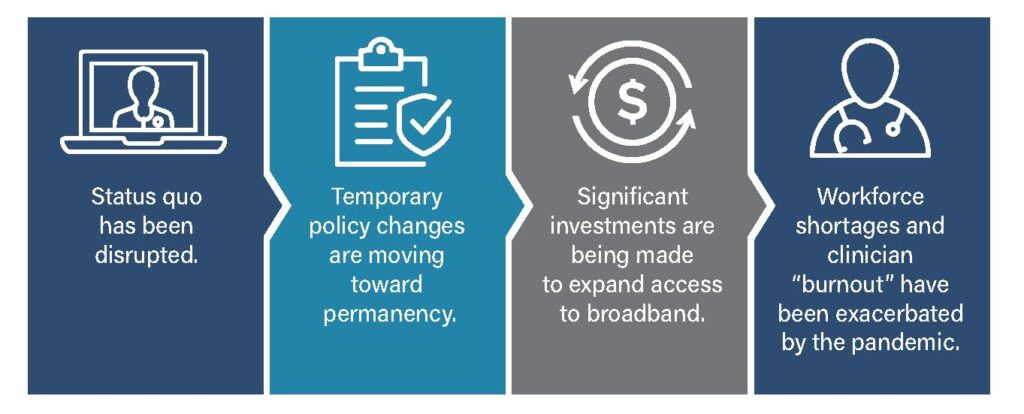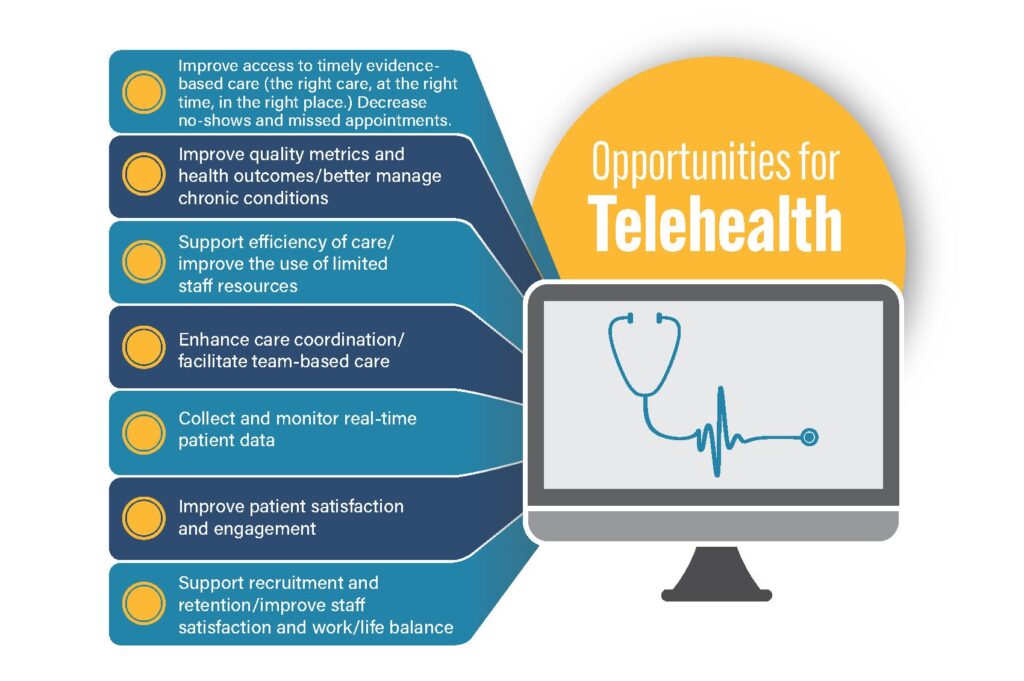Telehealth is not new, but during its early developments, it was viewed as a way to mitigate the barriers of time, distance and provider scarcities for rural Americans. Its adoption has grown slowly and steadily over time, extending beyond just rural America. However, the adoption of telehealth has exploded over the past few years as a result of the COVID-19 Public Health Emergency. Massive landscape changes have taken place.

During this time, health care professionals have learned (and will continue to learn) that:
- Telehealth technologies are simply tools in a health care professional's toolbox.
- Telehealth is more than just a substitute for in-person care. Technology technologies allow for care that extends well beyond what can be provided in the "office", creating new and better care pathways.
- Telehealth is rapidly integrating into all aspects of health and health care. The day is coming soon when health and telehealth will be synonymous. All of care will be a seamless blend of the physical and digital worlds.
So while the benefits of telehealth have not changed since its beginnings, the opportunities for telehealth have significantly expanded (and will continue to expand as new technologies emerge).


